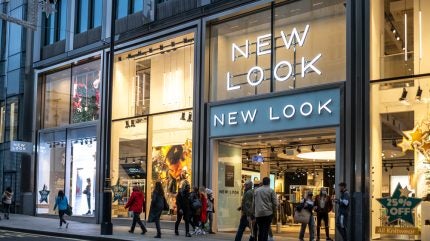
Footfall across UK retail destinations saw a significant year-on-year decline in November 2024, with a 4.5% drop compared to the same period last year, according to the latest BRC-Sensormatic report.
The figures reflect a challenging trading environment, exacerbated by external factors such as Storm Bert, low consumer confidence, and the timing of Black Friday sales.
“Footfall took a disappointing tumble in November,” noted Helen Dickinson, Chief Executive of the British Retail Consortium.
“A later-than-usual Black Friday and low consumer confidence meant customers were hesitant to hit the shops. Storm Bert’s travel disruptions towards the end of the month compounded this decline, particularly in northern cities.”
Each retail category experienced a setback, with shopping centres hit hardest, suffering a 6.1% decline. High street footfall fell by 3.7%, while retail parks showed a comparatively modest dip of 1.1%.
Regional differences also emerged, with Wales experiencing the steepest drop at 7.1%, followed by Scotland at 6.8%, England at 4.2%, and Northern Ireland at 2.8%.
Retailers pin their hopes on December
Despite November’s subdued performance, retailers are optimistic that the festive season will bring relief. Andy Sumpter, Retail Consultant EMEA for Sensormatic, explained that November’s figures did not account for Black Friday or the key Saturday following it.
“These dates are tipped as some of the busiest for store shopping during peak trading,” he said.
Sumpter added, “Retail store visits dipped in November as consumer confidence remains volatile, perhaps not helped by post-Budget spending jitters. However, all eyes now turn to December.
Retailers hope to make up for lost ground and turn around their festive fortunes. Success will rely on effective merchandising, robust inventory availability, and creating compelling in-store experiences that bring seasonal magic to life.”
Dickinson also highlighted the economic importance of strong December trading. “Retail not only contributes to the economy of local areas but is essential to everyday life in communities across the country. The golden quarter is critical for retailers, particularly as they face new financial pressures in 2025.”
Rising costs cloud 2025’s outlook
Looking beyond December, the retail sector faces a mounting financial burden, with £7 billion in additional costs looming from increases in Employer National Insurance, the National Living Wage, and packaging taxes.
Dickinson warned that these pressures could stifle investment in jobs and local high streets, hindering long-term recovery.
“To bolster footfall and the growth that comes with it, the Government must help mitigate these impacts,” she urged. Retailers are calling for policies that ease cost pressures, ensuring the industry can thrive despite current headwinds.
As the festive season unfolds, December’s performance will prove pivotal in shaping not only the year-end results but also the sector’s resilience in the face of a challenging 2025.



